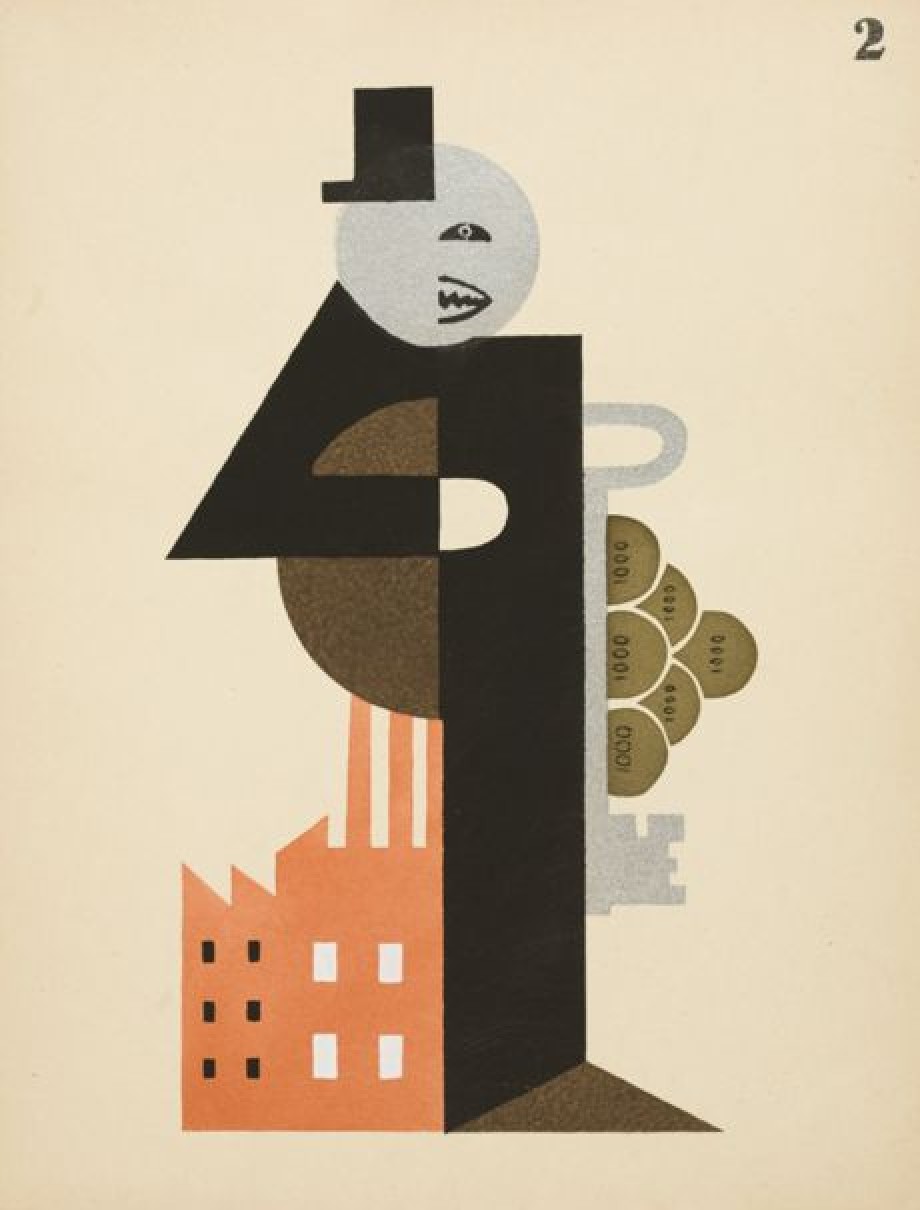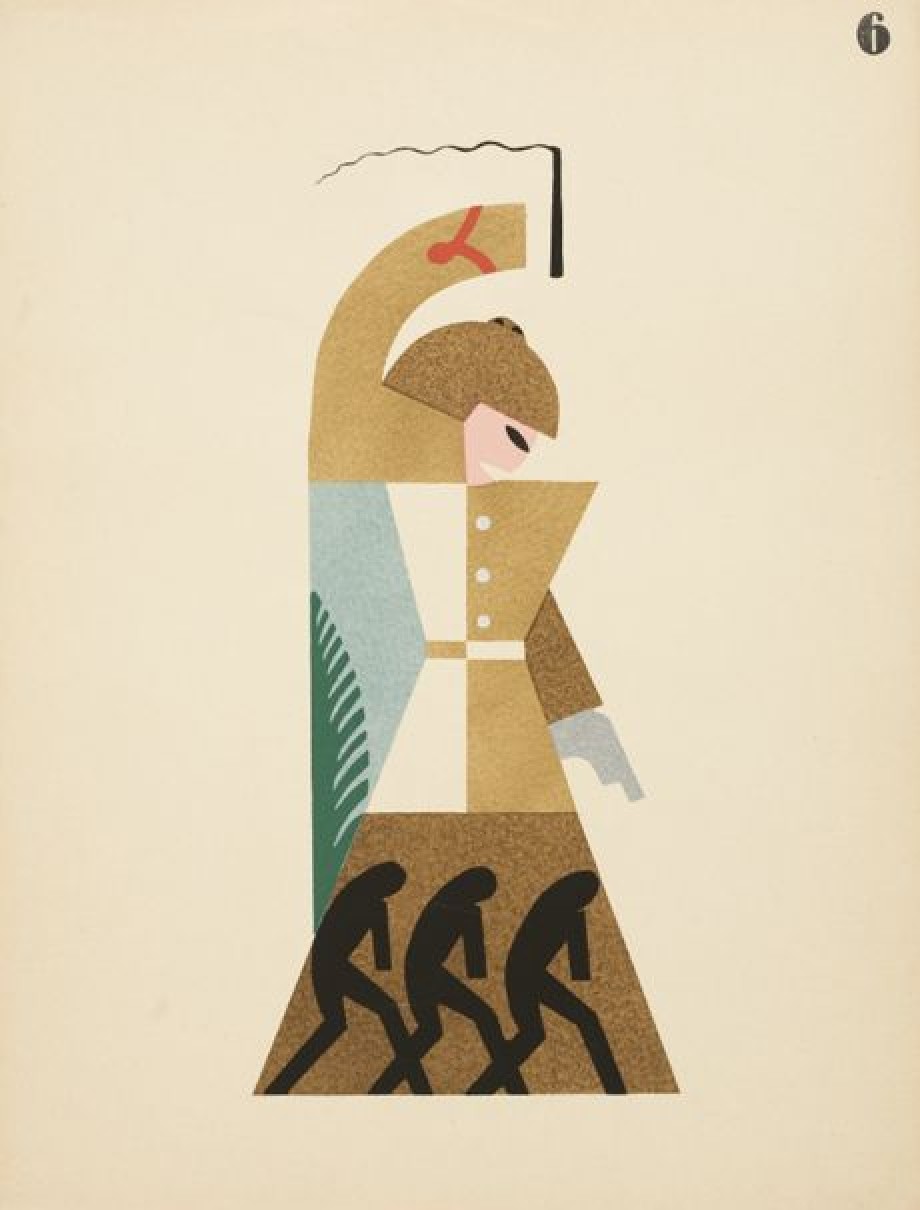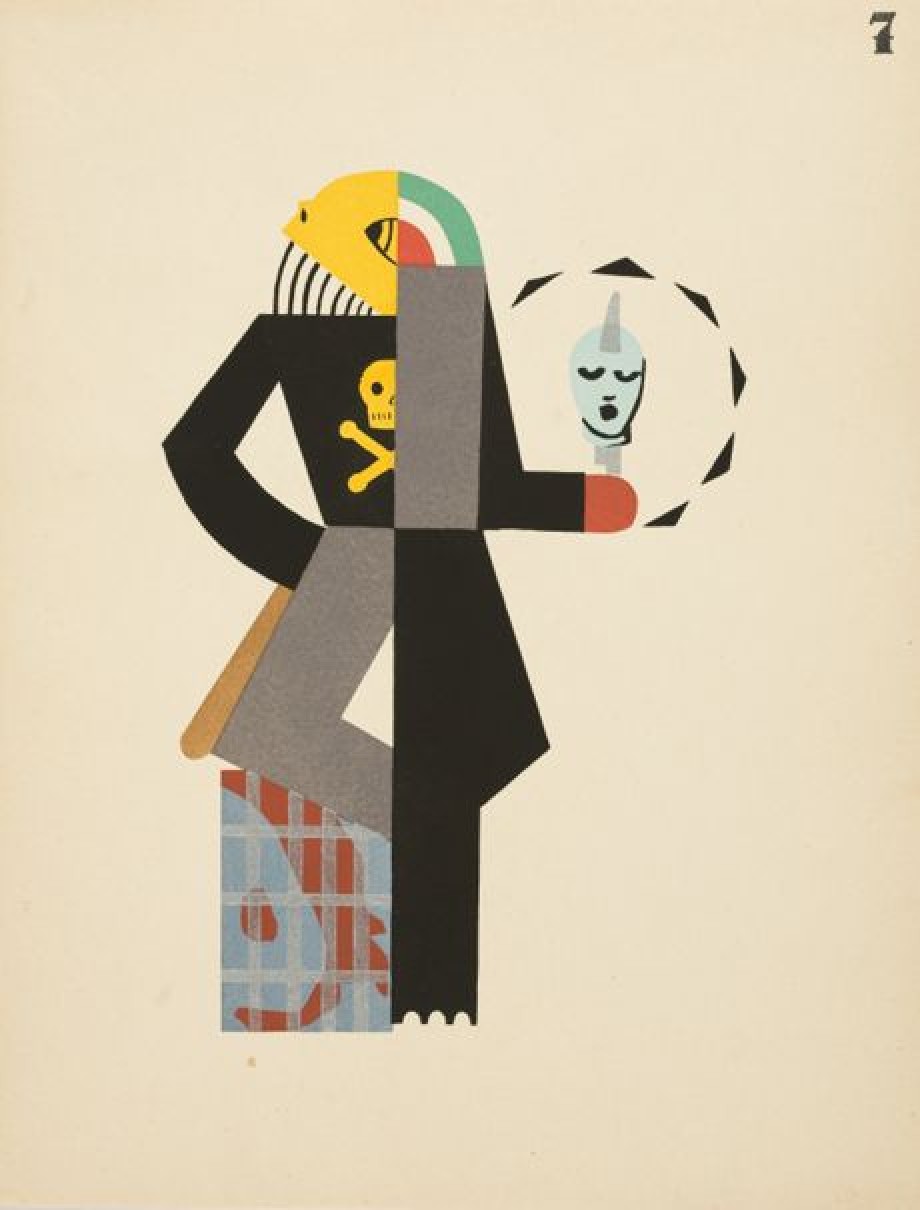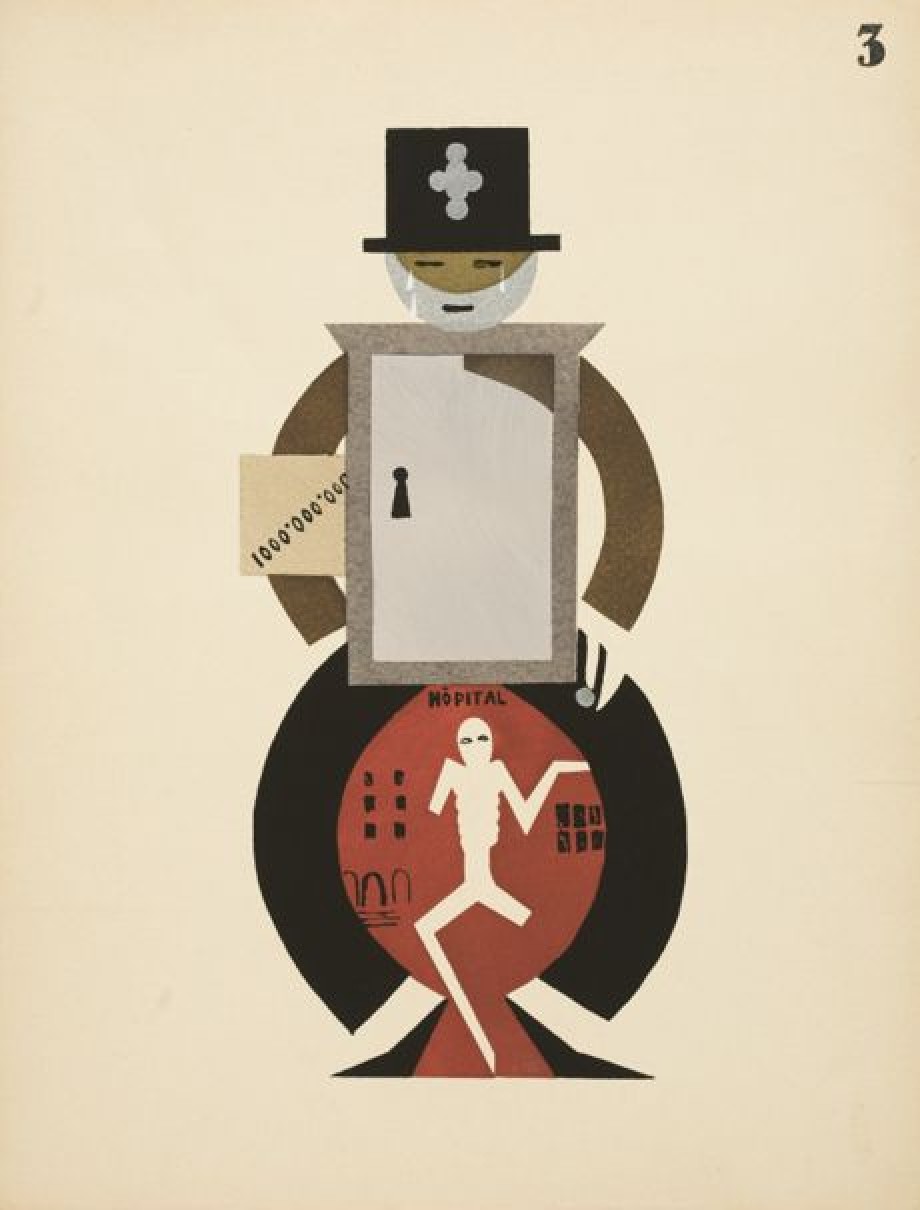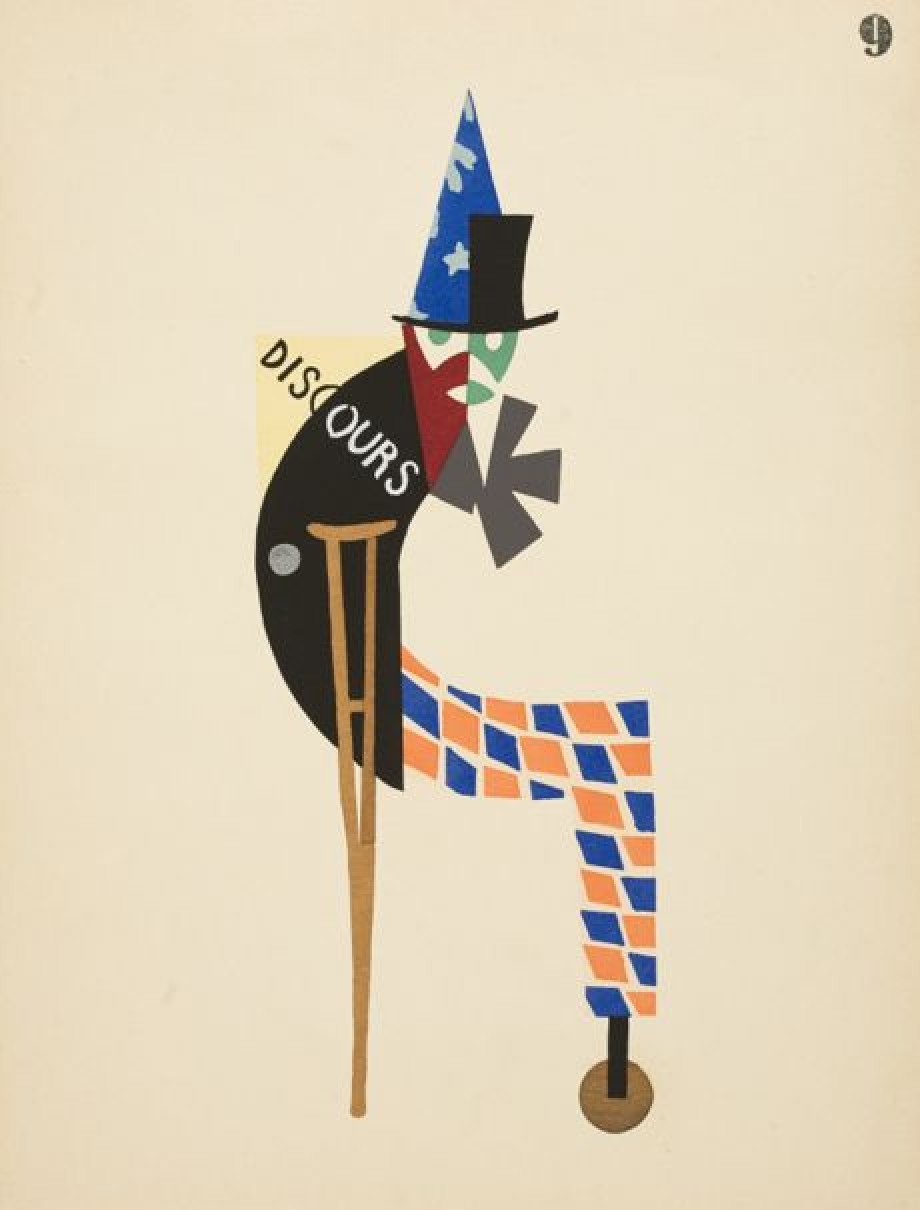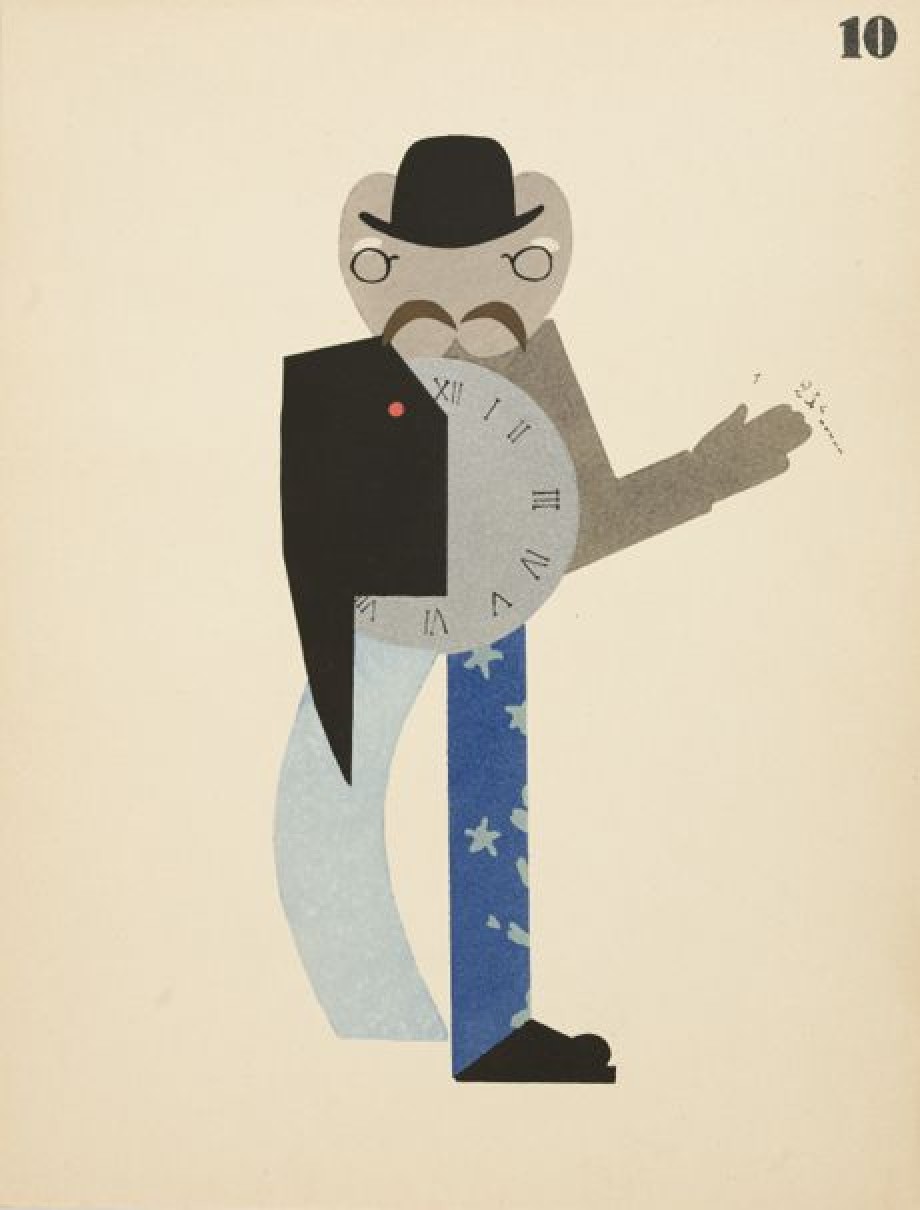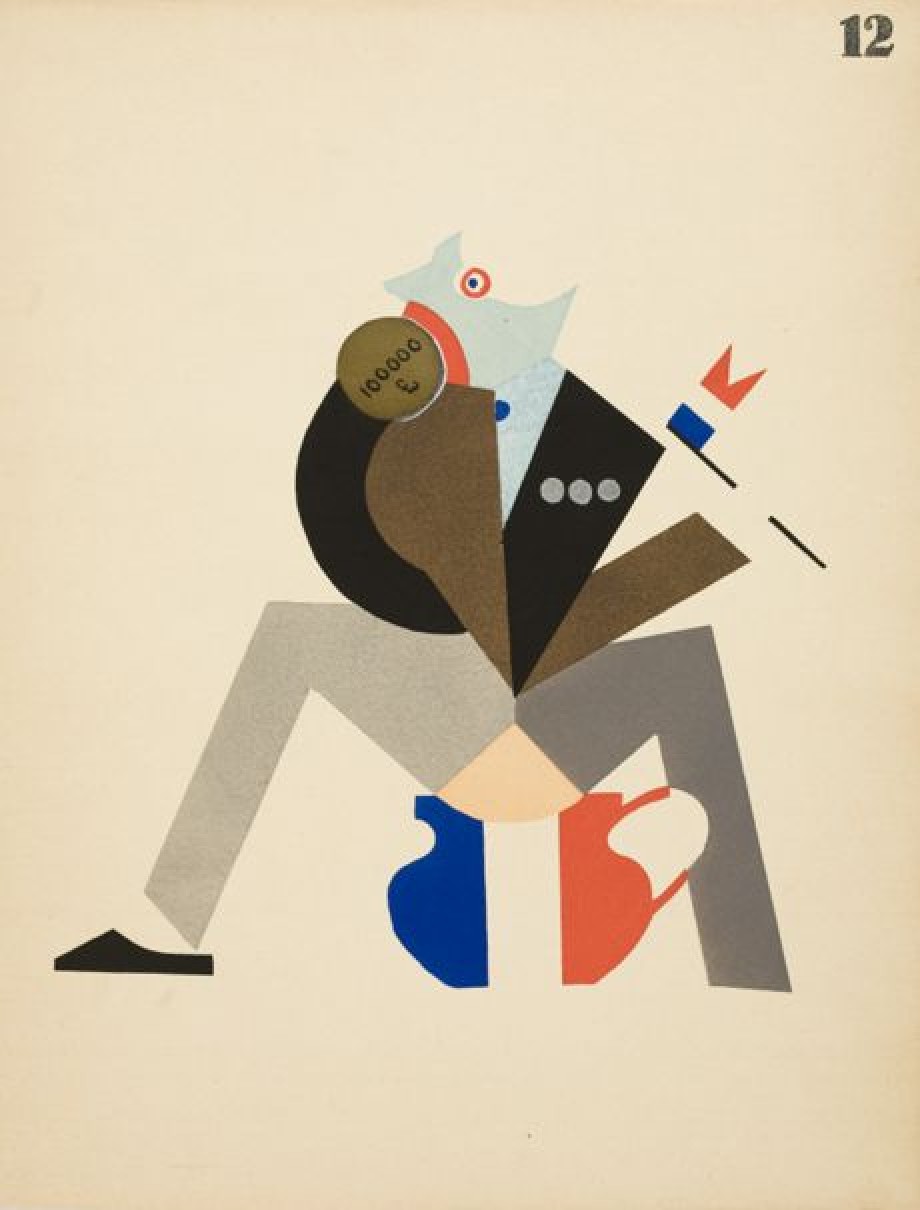Militarism, from the series of Jeu de massacre. 12 personnages à la recherche d'une [balle]

Date
1928Period
20th centuryCollection
Museum of Fine Arts Ghent
The portfolio 'Jeu de massacre. 12 personages [sic] à la recherche d'une [balle]' was published in 1928 by the Brussels publishing house Les éditions socialistes. It includes the publisher's folder, an introduction by Henri Barbusse and 12 pochoirs by Fred Deltor (1899-1969, ps. of Federico Antonio Carasso), originally an Italian self-taught artist who was active in Brussels in the 1920s…
Read more
The portfolio 'Jeu de massacre. 12 personages [sic] à la recherche d'une [balle]' was published in 1928 by the Brussels publishing house Les éditions socialistes. It includes the publisher's folder, an introduction by Henri Barbusse and 12 pochoirs by Fred Deltor (1899-1969, ps. of Federico Antonio Carasso), originally an Italian self-taught artist who was active in Brussels in the 1920s and early 1930s. In the introduction Barbusse ironically describes 'notre belle époque (dont nous sommes si fiers)', and explains the spirit of the pochoirs. They should be seen as an illustration of their own time and as an indictment of potentates of various kinds: 'pantins royaux, impériaux et divins'. The aim is to shake up the masses: '[It] makes for your stupidity and your rejection of this symbolic period gallery'. Barbusse sees Deltor as a socialist 'comrade', further also as an 'ouvrier constructeur' or even 'un noble bourreau et un superbe chirurgien', who brings the truth to light: 'Il a pavoisé chacun de ses gnomes formidables, de ses caractères essentiels, et cela en quelques taches de couleurs bien senties. They have been made diagrammatic, geometric and net-like, like machines to grind and scratch the world, baroque and monstrous, like caricatures. Ce camarade-là, qui sait juggler avec la synthèse, a fait de la superrréalité'. Furthermore, Barbusse refers to the gold-printed circles on some of Deltor's sheets: 'C'est sur ces roulettes d'or que tout roule, et que vous [namely: the masses] êtes roulés, vous tous'. The numerical calculation of the 'parasites of modern society' is only one example of Deltor's hidden imagery. Barbusse further points out the two-legged silhouettes of these 'gnomes'. Their bodies are composed of shards and debris that refer to their abuse of power: 'There is the coffre-fort, the sabre and the object, the soupirail and the balance broken, and the hands in the form of browning, and the squelette, and even the cœur démagogique and the larmes de crocodile'. Barbusse concludes his introduction with a revolutionary image of the future: 'Voici le jeu de massacre, le jeu de massacre suprême. Que vous massacrerez peut-être un jour, vous tous !’ On the verso side of Barbuse's introduction, the various powers are divided into twelve categories. The titles are translated and numbered in seven languages. This numbering refers to the twelve pochoirs: 1. Militarism / 2. Property / 3. Philanthropy / 4. Social democracy / 5. The judiciary / 6. Colonisation / 7. Fascism / 8. Spying / 9. Parliamentarism / 10. The petty bourgeoisie / 11. Religion / 12. Chauvinism. The folder dates from the Belgian years of Deltor, who later made a career as a sculptor in the Netherlands. It is one of the rare Belgian constructivist examples of socially engaged art in the interwar period. In terms of design, it is closely related to the work of international modernists such as El Lissitsky, Lajos Kassák, Fernand Léger, Louis Marcoussis, Kurt Schwitters and Theo van Doesburg.
Read less
